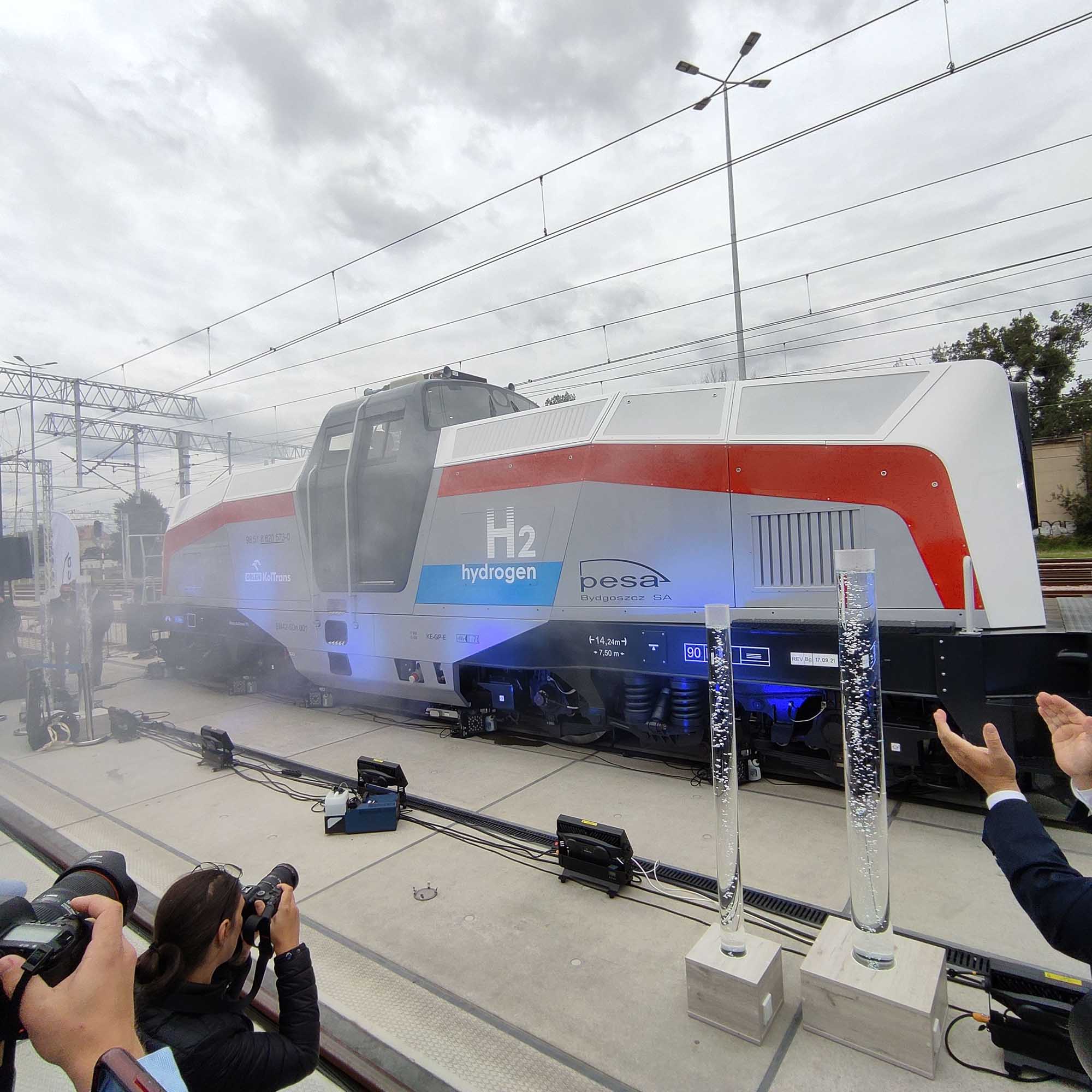Poland – The first Polish hydrogen locomotive PESA (SM42-6Dn), was perhaps the most anticipated debut of the TRAKO 2021 International Railway Fair, as evidenced by the crowds of attendees that crammed the exhibition tracks.
PESA has formed strategic collaborations with PKN Orlen and PKP SA as part of the hydrogen vehicle project, and will shortly sign agreements with additional partners interested in collaborating with PESA on the deployment of hydrogen technology in rail transport.
PESA established low-emission rail transit as a fundamental premise of its product strategy two years ago. Among other things, the new Pesa Regio160 passenger vehicle platform was designed around electric drives powered by an overhead contact line or by batteries or hydrogen cells.
Unique hydrogen drive
The SM42 6Dn is a four-axle shunting locomotive equipped with four 180kW traction motors. It is powered by an unique zero-emission hydrogen drive. Energy is generated by two Ballard hydrogen cells. The 85 kW cell is a technology that generates electricity through the chemical reaction of hydrogen and atmospheric oxygen. Hydrogen is obtained from tanks containing a total of 175 kg. One refueling allows the locomotive to operate 24 hours a day.
Autonomous driving system
Additionally, the locomotive was equipped with an autonomous driving system that enables the driver to operate the vehicle alone while assembling trains, as well as an obstacle detection system (anti- collision).
The locomotive on display at TRAKO is a prototype that has recently come to an end of production. Bydgoszcz constructors conceptualized and designed it, and the business collaborated with numerous prominent domestic and international technical partners during its implementation. Among them were ABB, Ballard, Worthington, Luccini, Rawag, TSA, and CADD.
PESA is developing further zero-emission vehicles as part of the Regio160 platform development. These include several electric units that must be prepared to run on an overhead contact line, batteries, or hydrogen fuel cells. The first hydrogen-fueled PESA passenger car is scheduled to enter service in 2025/26.




